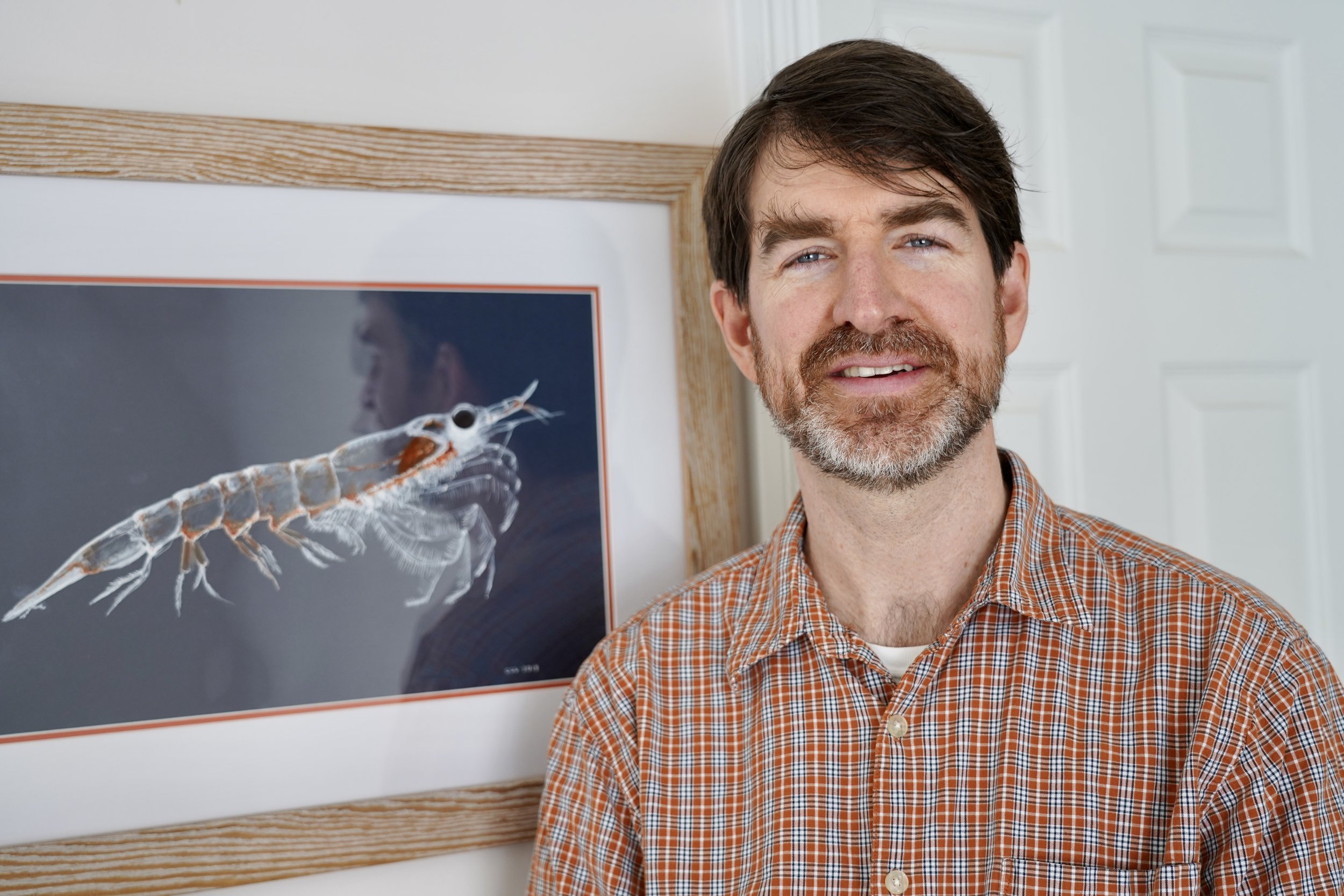Guest Post: Matt Lilley on Good Eating: The (Short) Life of Krill
It’s always wonderful to see books emerge from manuscripts I saw for the first time in a workshop. Congratulations to Matt Lilley on the release of his engaging, funny, surprising picture book, packed with information about the tiny creature that is the Southern Ocean’s keystone species. Here’s Matt on how he came to write this text.
Photo (and krill painting) © Tia Lilley. Images used courtesy of the author
In general, I love writing about nature. Nature provides so many great topics to write about. The tricky part, as a nonfiction writer, is to find ways to work those topics into interesting narratives.
Two specific topics that I was drawn to were Antarctica and birds. Put those two things together and you get...penguins! But not just penguins. Also, snow petrels, albatross, Antarctic terns, skuas... For my own writing, I’d done a ton of reading about Antarctic wildlife, especially the birds. And no matter what creature I did research on, I always ran into mentions of krill. It seems like everything down there eats krill!
So I decided to research krill. It immediately became obvious that krill are very important. The more I read about them, the more I realized that they are not only important – they are also strange, fascinating creatures. So, from just a little research, I decided I had to write a book about them. I knew that if I could write the book well enough, readers would be as interested in them as I was.
That’s where the hard part began. I wrote several drafts of a complete manuscript about a krill that I named “Slim.” It started with Slim’s krill mom laying the egg that would become Slim. Then the story followed Slim from hatching to adulthood as Slim grew and narrowly avoided being eaten. At the climax of the story, Slim encountered the biggest krill predator, a blue whale. That story was OK, but I wasn’t ever really happy with it. I kept doing more research to fill in the details and trying to think of ways to make the story better. In my research, I came across an animation created by Lisa Roberts, called How Do Krill Grow? It tells how krill grow, but from a 1st and 2nd-person perspective. The krill asks questions about how it will grow, and someone unseen answers the krill’s questions:
That video gave me an epiphany – my story should be in 2nd person! The narrator should be saying “you,” talking to the krill!
That was a major breakthrough. As soon as I made that change, the story felt right. There was still a lot more work ahead to get to the final manuscript, but that next draft was very close to the one I ended up with. Hopefully the end result does the trick of drawing readers in to the strange, fascinating world of krill.
Matt, thank you for sharing the strange, fascinating tale of how your book came to be. I must say that your second person narrative turned your krill into a character, in such an interesting, endearing way. It also adds a kind of urgency to the story of this little creature. Congratulations!

